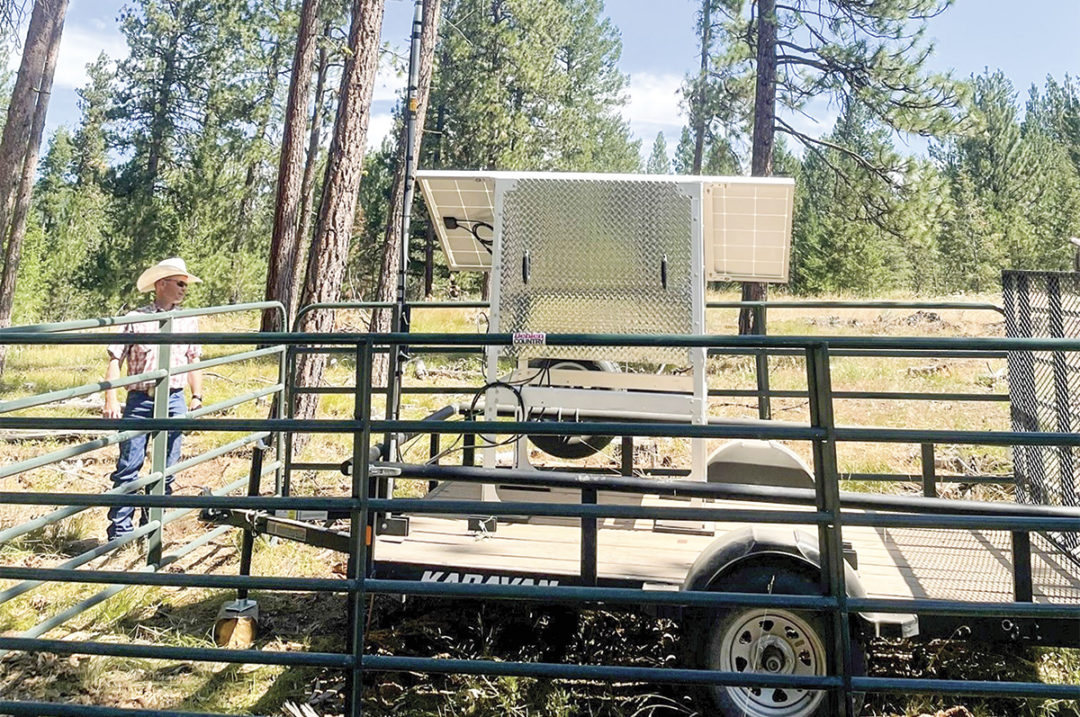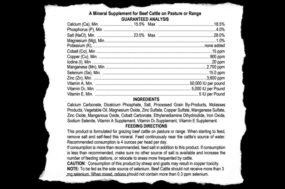Land and livestock managers in the Intermountain West face numerous challenges associated with public and private lands management. Some of these challenges include wildfires, riparian area restoration and management, maintaining and restoring wildlife habitat, fence construction and maintenance, and knowledge of grazing distribution and livestock location.
The use of virtual fence technology using GPS collars with the ability to provide audio and electrical stimuli (cues) may offer an economical management tool to strategically graze areas based on specific land and livestock management objectives. A great aspect of the virtual fence system is that the fences can be set up as a “one-way gate.” This is a powerful feature of the system that allows directional control of the animals, as livestock receive the cues/stimuli when they try to leave a management area but they are permitted to come back into the area without receiving cues/stimuli.
This works best when used as part of a larger overall management strategy, as setting up a virtual fence system requires careful consideration and knowledge of how the technology, landscape attributes, attractants (water, supplements, etc.) and grazing behavior can be utilized to collectively address management objectives and expectations. Consequently, there are numerous research groups across the U.S. and worldwide evaluating the production, environmental and socioeconomic aspects of using virtual fence technology for land and livestock management.
Research in the West
A precision agriculture technology work group at the Eastern Oregon Agricultural Research Center (EOARC) consisting of researchers from Oregon State University, USDA – Agricultural Research Service and The Nature Conservancy have conducted research and outreach programs over the last four years to test the efficacy of virtual fencing technology (Figure 1) for livestock and land management.
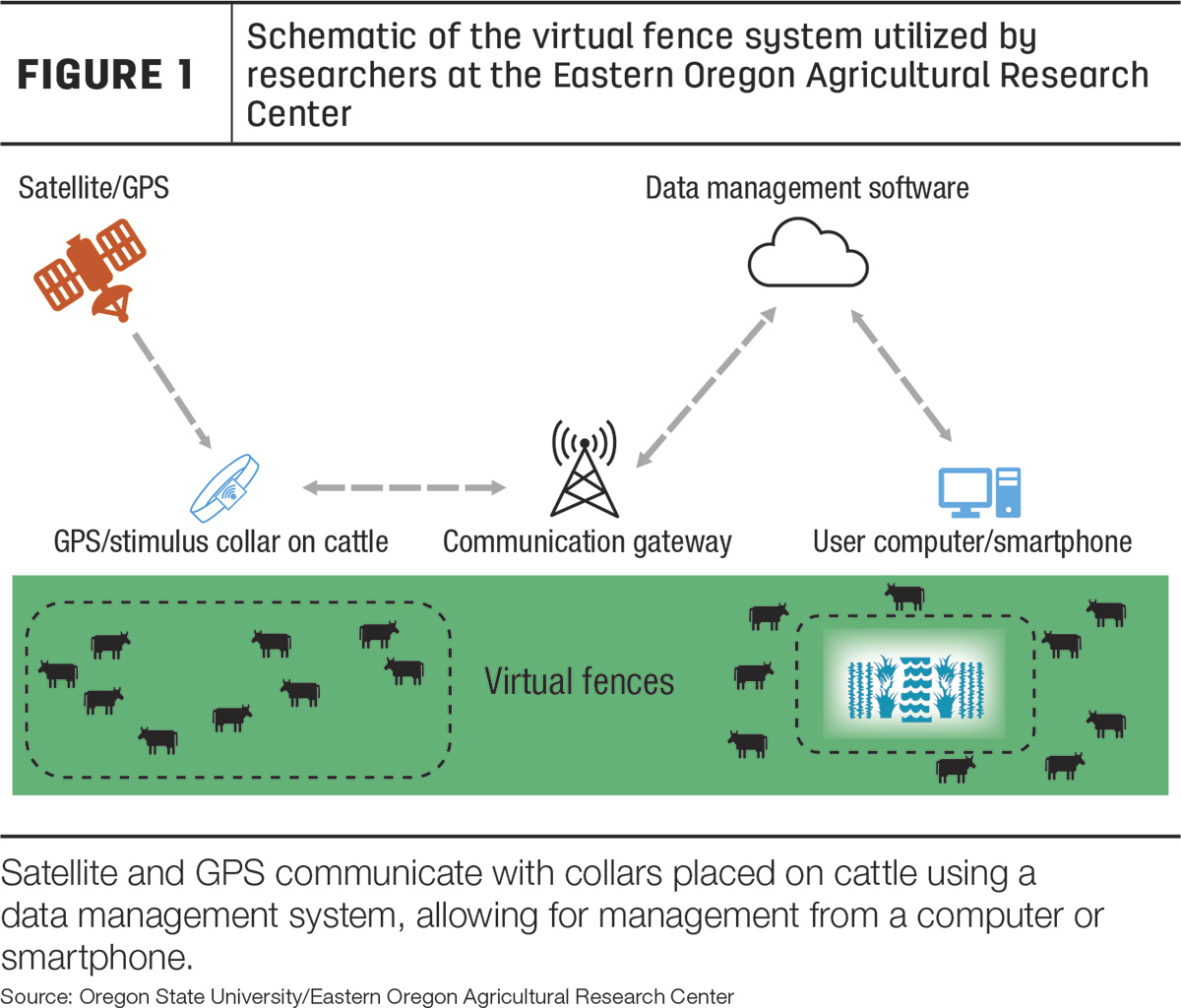
Cattle are fitted with GPS/stimulus collars that communicate with a GPS satellite to determine the location of the collar/animal, and a communication gateway allows communication with both the collar and data management software, which allows access to the collars using a computer or smartphone. With this system in place, a manager can monitor real-time cattle locations, actively control areas of livestock grazing, herd livestock with reduced labor inputs, allow grazing in areas that are difficult to fence, manage livestock distribution at the landscape scale to minimize conflicts with temporal wildlife activities and habitat needs, address pre- and post-wildfire management concerns and improve success of rangeland restoration practices following disturbance.
Our initial work with virtual fence technology involved evaluating animal welfare considerations related to cattle behavior (feeding, walking, running, head shaking, temperament, etc.) in response to the collar cues. Cattle were trained and adapted to the virtual fence system within three to four days with no long-term negative effects on animal behavior or stress-related variables. Furthermore, when collars were removed, the cattle accessed the prior virtual fence management zone with little to no apprehension.
Two additional studies have focused on management challenges associated with wildfire and wildfire risk mitigation faced by public and private land managers in the western U.S. Virtual fencing was effective in keeping cattle out of areas that had burned the prior year compared to comparable burned areas without virtual fencing. More importantly, forage utilization of the burned areas protected from grazing by the virtual fence technology was negligible to none compared with heavy utilization (almost 70%) without the virtual fence. This study illustrates virtual fence technology holds tremendous potential as a land and livestock management tool for land managers dealing with the consequences of wildfire and expectations associated with grazing permits and/or leases.
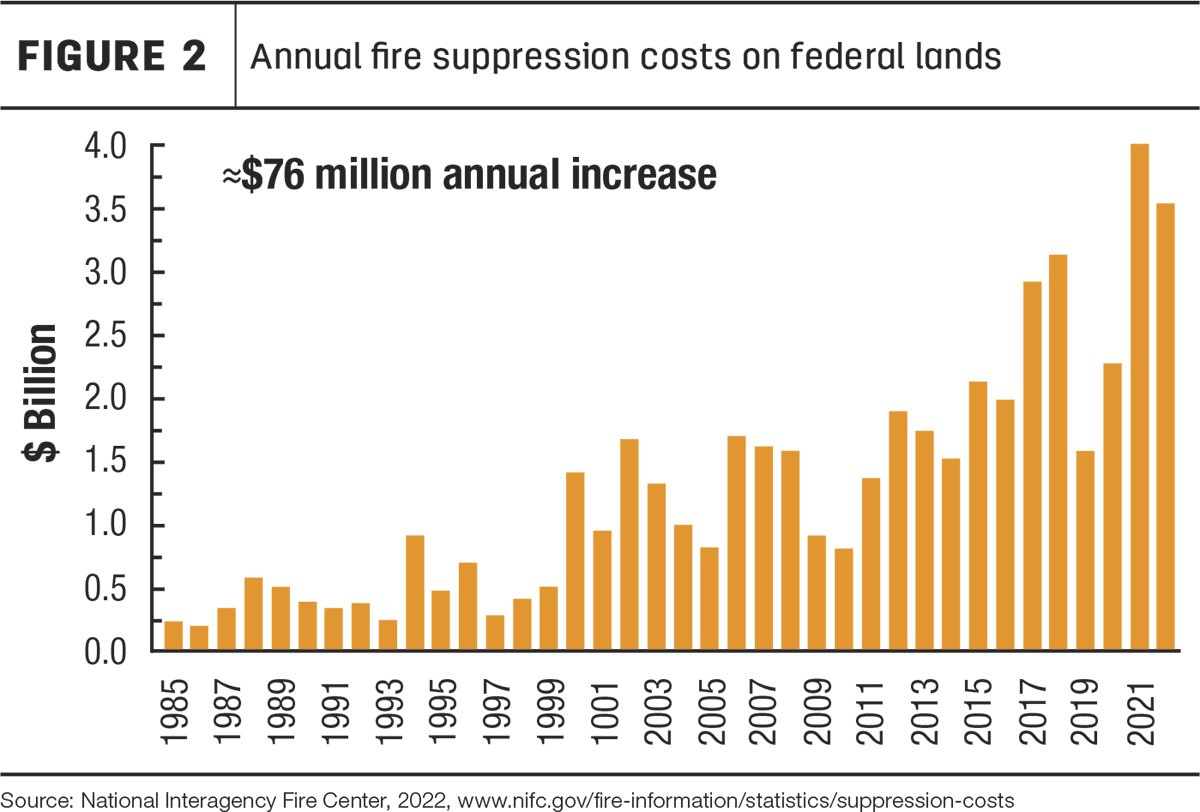
In another study, we attempted to construct a fire break approximately 2 miles long by 200 yards wide utilizing virtual fence technology and a mixed herd of cow-calf pairs and dry cows. The objective was to reduce fuel loads within the fire break by grazing to approximately 50% utilization of the standing forage. That objective was successfully met, demonstrating that virtual fencing can be a highly effective method of concentrating grazing to reduce forage (fuel) within linear fuel breaks, thereby reducing the risk and spread of catastrophic wildfire.
Currently, we are evaluating virtual fence technology as a management tool to control grazing behavior and cattle distribution in riparian areas containing critical salmonid habitat. We are also testing the technology on a landscape scale to determine its effectiveness, in coordination with remote sensing technology, to identify target areas to strategically reduce grass fuel loads as an approach to mitigate wildfire risk. The economic importance of this type of research is evident, especially considering the annual cost of fire suppression on federal lands alone has increased from roughly $250 million in 1985 to almost $4 billion today (Figure 2). An additional economic benefit we have noted with the virtual fence system is the reduced labor and time required to locate and move cattle in the large pastures (5,000 to 30,000 acres) common in the West.
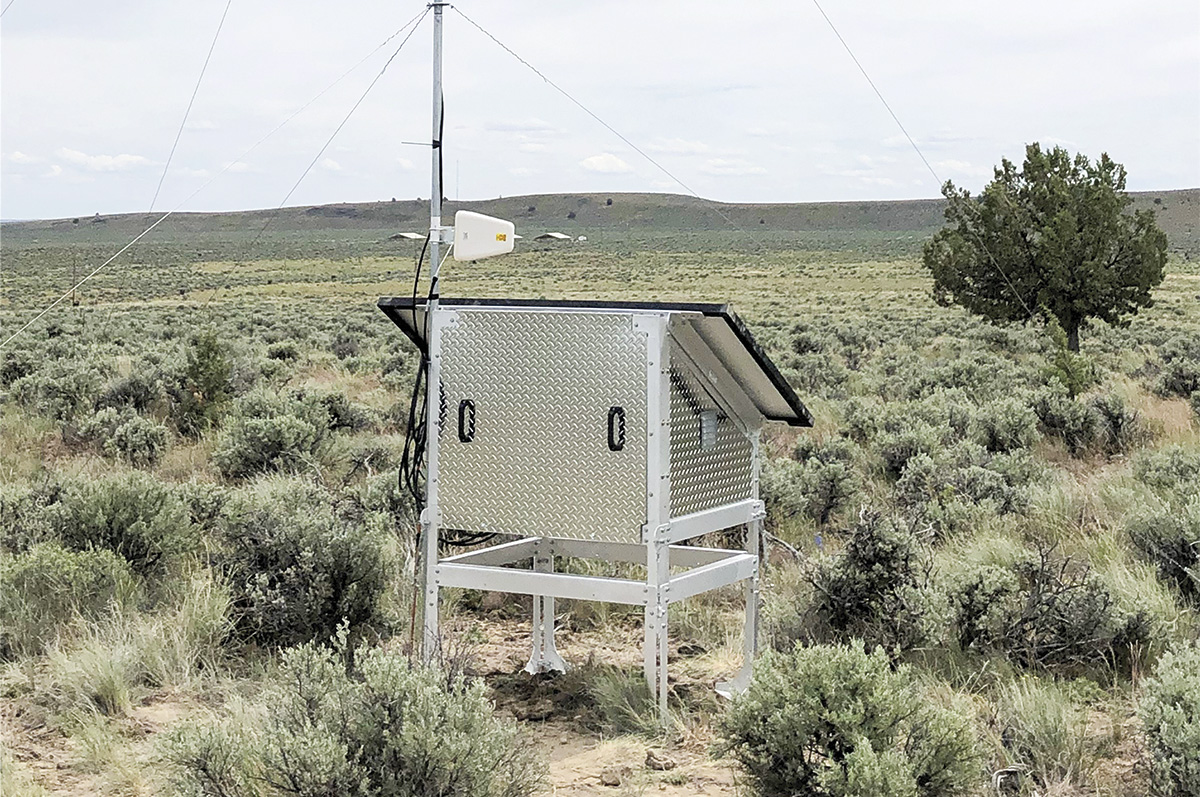
This is a communication gateway with limited portability. Photo courtesy of Eastern Oregon Agricultural Research Center, Oregon State University.
What does it cost?
Two of the most frequent questions from livestock and land managers related to the technology are: What equipment is required, and what does it cost? The answers to these questions vary depending on the specific virtual fence company used, existing infrastructure of the individual operation, cost of traditional fencing and management objectives. That said, utilizing a virtual fence system, like all investments, requires determining an operation-specific cost/benefit assessment. As an example of our costs at EOARC, we have been working with a company that requires purchase of at least one communication gateway and renting virtual fence collars.
A communication gateway costs approximately $10,000, and collars are rented for approximately $50 per collar annually (including a replaceable battery). When purchased, the gateway is set up to be stationary, which limits the system’s flexibility and use in extensive landscapes. Typically, a single gateway can serve from 5,000 to 10,000 acres, depending on terrain. Therefore, at EOARC we designed a system to make the gateways portable by installing them on a small trailer (approximately $2,500), thereby making movement of gateways relatively easy, reducing the number and cost for large operations and improving management flexibility. Just for comparison, in Oregon, building a new traditional fence or replacing a fence destroyed by fire will cost roughly $15,000 to $20,000 per mile, not including annual maintenance.
In the future, given the established and other potential advantages of virtual fence technology for natural resource management, I am hopeful land and livestock managers will have the opportunity to offset the costs of virtual fence technology through credit and funding for ecosystem services (e.g., ecological resiliency, wildlife habitat, water quality, carbon sequestration, recreation and rural economies) and/or eligibility for cost shares, making the technology more economical and accessible for land and cattle managers. Also, as additional virtual fence companies begin marketing their products for commercial use, increased competition may decrease the cost of virtual fence systems.
